 Technology peripherals
Technology peripherals
 AI
AI
 Today we are using AI to create an interface to prevent repeated submission of annotations.
Today we are using AI to create an interface to prevent repeated submission of annotations.
Today we are using AI to create an interface to prevent repeated submission of annotations.
Hello, everyone, I am amazing.
No matter whether the interface is called once or multiple times, the idempotence of the interface ensures that operations on the same resource will only produce the same result. Repeated calls to the same interface request multiple times should have the same results as a single request and should not cause inconsistency or side effects.
Today we used artificial intelligence to create a custom annotation to prevent the interface from being requested multiple times within 30 seconds, and used Redis as a cache.
Question
Without further ado, just ask:

After waiting for a few minutes. . .
1. Create custom annotations, including interface protection duration, enabling protection against repeated submissions, etc.
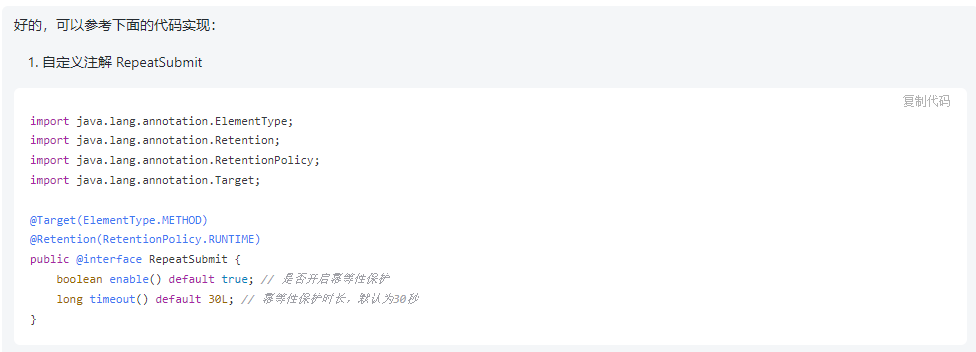
2. Then create the interceptor
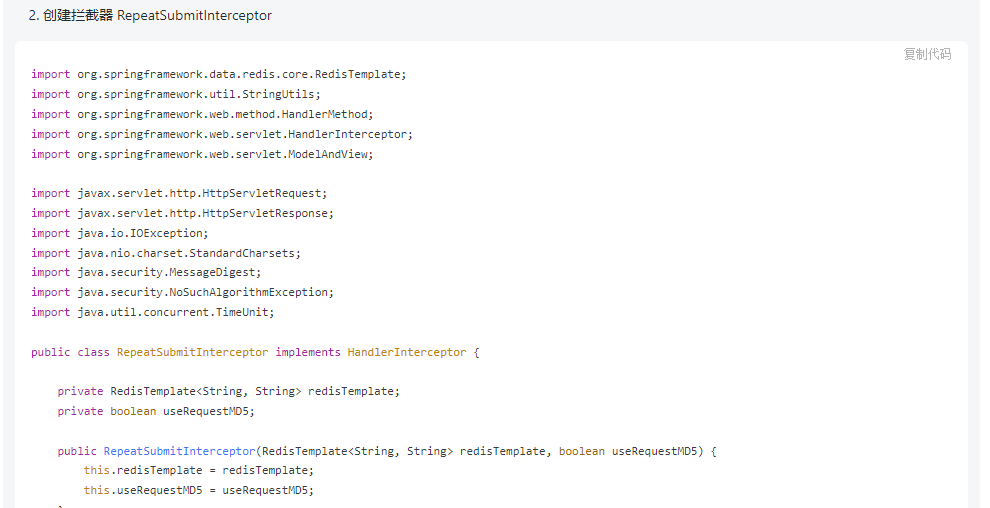
Here we Post the core code of the interceptor:
@Overridepublic boolean preHandle(HttpServletRequest request, HttpServletResponse response, Object handler) throws Exception {if (handler instanceof HandlerMethod) {HandlerMethod handlerMethod = (HandlerMethod) handler;RepeatSubmit annotation = handlerMethod.getMethodAnnotation(RepeatSubmit.class);if (annotation != null && annotation.enable()) {String key = buildKey(request);if (StringUtils.hasText(redisTemplate.opsForValue().get(key))) {response.getWriter().write("repeat request, please try again later!");return false;} else {redisTemplate.opsForValue().set(key, Arrays.toString(request.getInputStream().readAllBytes()), annotation.timeout(), TimeUnit.SECONDS);}}}return true;} //创建redis 缓存keyprivate String buildKey(HttpServletRequest request) throws IOException, NoSuchAlgorithmException {String key = useRequestMD5 ? hashRequest(request) : request.getRequestURI();return "repeat-submit:" + key;} //对请求做hash运算private String hashRequest(HttpServletRequest request) throws IOException, NoSuchAlgorithmException {byte[] hashBytes = MessageDigest.getInstance("MD5").digest(request.getInputStream().readAllBytes());StringBuilder sb = new StringBuilder();for (byte b : hashBytes) {sb.append(String.format("%02x", b));}return sb.toString();}3. Register the interceptor
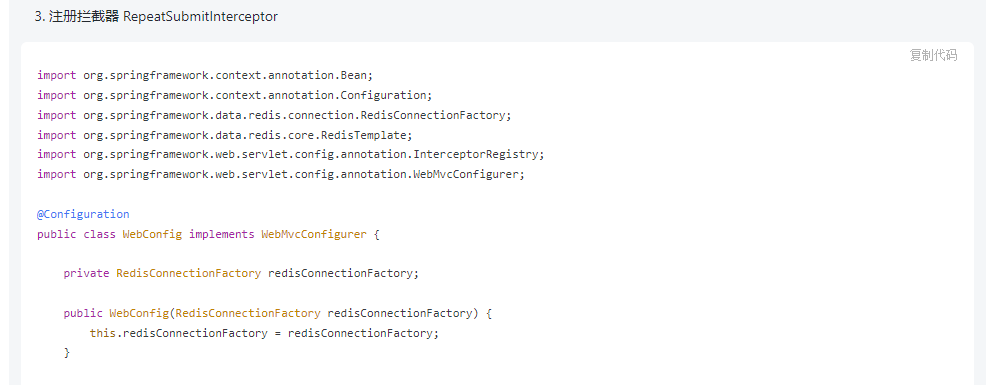
The explanation and usage given at the end.

The above is the most critical code.
Connect to Redis
Next we connect to Redis. The most streamlined configuration version
spring:data:redis:host: 127.0.0.1 port: 6379
Interface usage annotations
@RestControllerpublic class RepeatTestController {@RepeatSubmit@GetMapping("/hello/mono1")public Mono<string> mono(){return Mono.just("Hello Mono -Java North");}@RepeatSubmit@PostMapping ("/hello/mono1")public Mono<string> mono1(@RequestBody User user){return Mono.just("Hello Mono -Java North-"+user.getName());}}</string></string>Start a Redis locally, and then start the local SpringBoot project for testing,
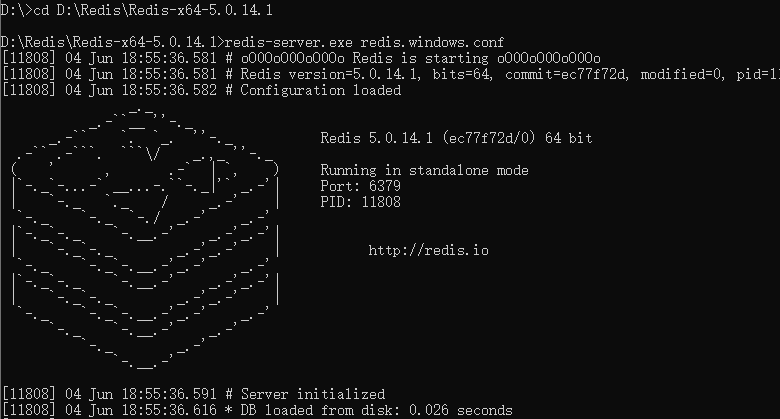
Local interface test: Repeated requests within 30 seconds will need to be intercepted directly

The KEY cached in Redis is as follows:
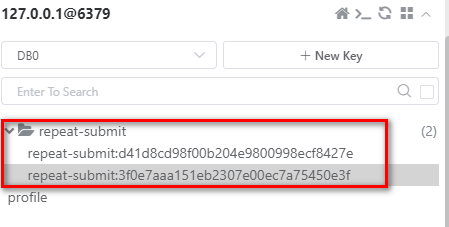
The relevant code is at the end of the article, you can use it for free if you need it!
Interface idempotence solution
Let’s ask about the interface idempotence solution,
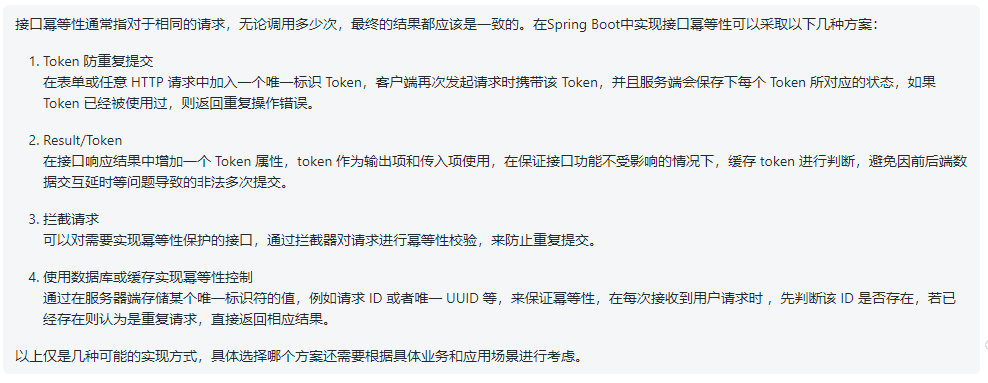
About What do you think of this answer?
Related code links, welcome to visit:
https://www.php.cn/link/94c0915ab3bcbc61c1c61624dd6d7cd5
The above is the detailed content of Today we are using AI to create an interface to prevent repeated submission of annotations.. For more information, please follow other related articles on the PHP Chinese website!

Hot AI Tools

Undresser.AI Undress
AI-powered app for creating realistic nude photos

AI Clothes Remover
Online AI tool for removing clothes from photos.

Undress AI Tool
Undress images for free

Clothoff.io
AI clothes remover

AI Hentai Generator
Generate AI Hentai for free.

Hot Article

Hot Tools

Notepad++7.3.1
Easy-to-use and free code editor

SublimeText3 Chinese version
Chinese version, very easy to use

Zend Studio 13.0.1
Powerful PHP integrated development environment

Dreamweaver CS6
Visual web development tools

SublimeText3 Mac version
God-level code editing software (SublimeText3)

Hot Topics
 How to achieve the effect of high input elements but high text at the bottom?
Apr 04, 2025 pm 10:27 PM
How to achieve the effect of high input elements but high text at the bottom?
Apr 04, 2025 pm 10:27 PM
How to achieve the height of the input element is very high but the text is located at the bottom. In front-end development, you often encounter some style adjustment requirements, such as setting a height...
 How to correctly display the locally installed 'Jingnan Mai Round Body' on the web page?
Apr 05, 2025 pm 10:33 PM
How to correctly display the locally installed 'Jingnan Mai Round Body' on the web page?
Apr 05, 2025 pm 10:33 PM
Using locally installed font files in web pages Recently, I downloaded a free font from the internet and successfully installed it into my system. Now...
 How to select a child element with the first class name item through CSS?
Apr 05, 2025 pm 11:24 PM
How to select a child element with the first class name item through CSS?
Apr 05, 2025 pm 11:24 PM
When the number of elements is not fixed, how to select the first child element of the specified class name through CSS. When processing HTML structure, you often encounter different elements...
 Where to get the material for H5 page production
Apr 05, 2025 pm 11:33 PM
Where to get the material for H5 page production
Apr 05, 2025 pm 11:33 PM
The main sources of H5 page materials are: 1. Professional material website (paid, high quality, clear copyright); 2. Homemade material (high uniqueness, but time-consuming); 3. Open source material library (free, need to be carefully screened); 4. Picture/video website (copyright verified is required). In addition, unified material style, size adaptation, compression processing, and copyright protection are key points that need to be paid attention to.
 How to quickly build a foreground page using AI programming tools?
Apr 04, 2025 pm 08:24 PM
How to quickly build a foreground page using AI programming tools?
Apr 04, 2025 pm 08:24 PM
Quickly build the front-end page: Shortcuts for back-end developers As a back-end developer with three to four years of experience, you may be interested in basic JavaScript, CSS...
 Does H5 page production require continuous maintenance?
Apr 05, 2025 pm 11:27 PM
Does H5 page production require continuous maintenance?
Apr 05, 2025 pm 11:27 PM
The H5 page needs to be maintained continuously, because of factors such as code vulnerabilities, browser compatibility, performance optimization, security updates and user experience improvements. Effective maintenance methods include establishing a complete testing system, using version control tools, regularly monitoring page performance, collecting user feedback and formulating maintenance plans.
 Setting flex: 1 1 0 What is the difference between setting flex-basis and not setting flex-basis?
Apr 05, 2025 am 09:39 AM
Setting flex: 1 1 0 What is the difference between setting flex-basis and not setting flex-basis?
Apr 05, 2025 am 09:39 AM
The difference between flex:110 in Flex layout and flex-basis not set In Flex layout, how to set flex...
 How to keep the text at the bottom while the input box height increases?
Apr 05, 2025 pm 02:12 PM
How to keep the text at the bottom while the input box height increases?
Apr 05, 2025 pm 02:12 PM
How to keep the text at the bottom while the input box height increases? During the development process, we often encounter the need to adjust the input box height, and at the same time hope...





